Imagine this scenario with me: you’re examining your fruit trees, several that you’ve been growing for years.
Much to your horror, most of your apples have come down with evil looking sooty blotches that may coalesce to cover the entire fruit, or specks that look like fly excreta.
Extension agents frequently receive panicked questions about these symptoms.
But there’s good news! You can rest assured that your fruit will be fine, and these blemishes are just cosmetic. In fact, you can actually rub off a lot of them, like a ding in the shiny new paint job on your car.
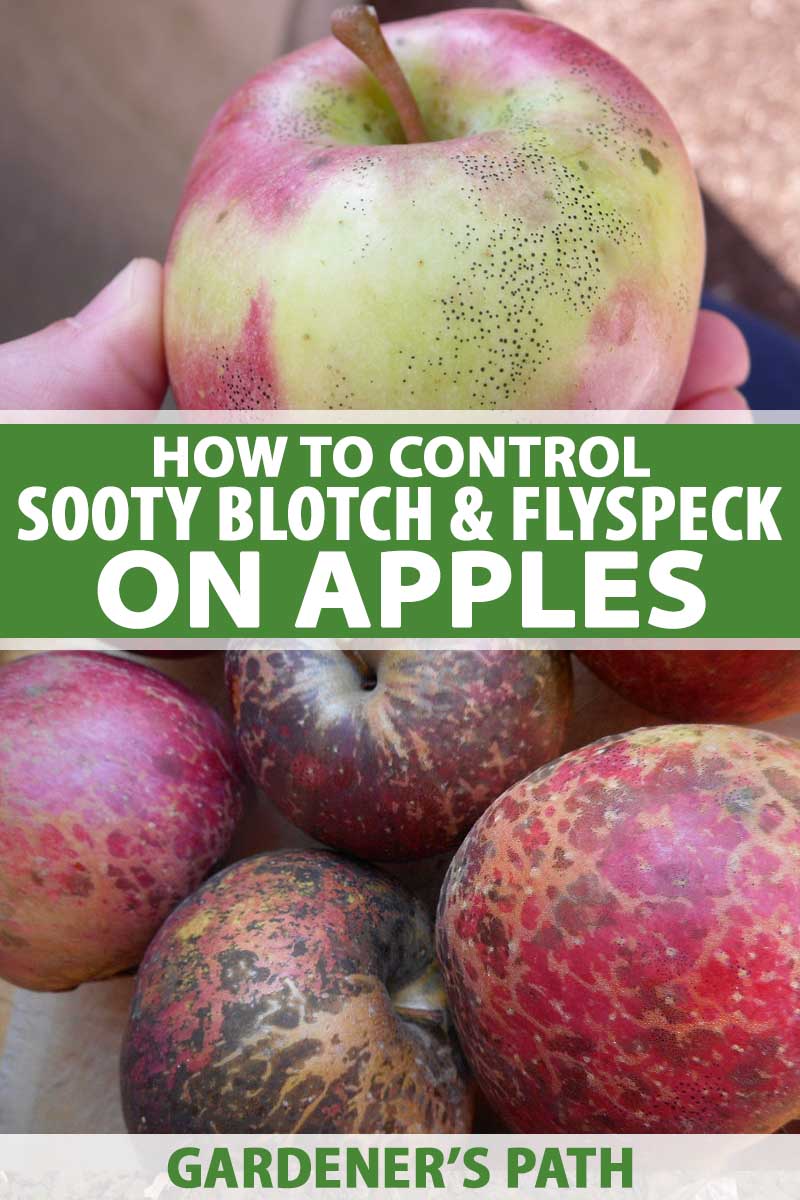
We link to vendors to help you find relevant products. If you buy from one of our links, we may earn a commission.
This is fine if you will just be making apple sauce or apple butter with them, but what if you want to sell your apples?
We will give you tips on how to prevent these diseases from plaguing your trees, and what to do if they do occur.
What Are Sooty Blotch and Flyspeck?
First, it’s important to understand that these symptoms are due to the activities of two different diseases. Sooty blotch is caused by several different types of fungi, while flyspeck is caused by the fungus Zygophiala jamaicensis.
These two diseases are usually grouped together because they often occur on fruit together, and are controlled the same way.
Flyspeck manifests as clusters of 6-50 black, shiny, slightly raised round dots. Sooty blotch is as it sounds – dark blotches that may cover most of your apples.

One thing to remember if your tree is prone to this problem is that the symptoms look a lot worse on light-colored fruit. Particularly if you are selling your apples, you might want to consider growing red-skinned varieties.
The Insidious Disease Process
Sooty blotch and flyspeck are most severe in cool, wet weather. In fact, one of the things that makes your tree much more susceptible to their onslaught is when it is dark and shady inside.
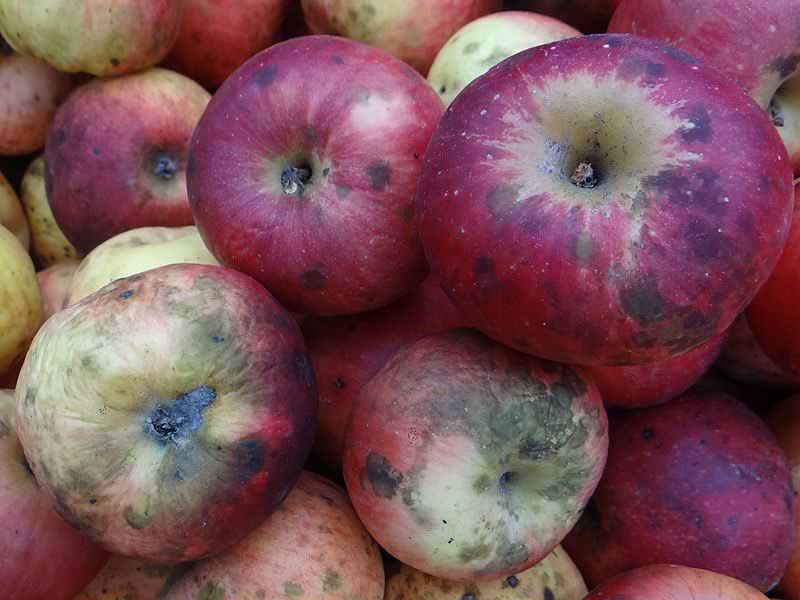
The worst infections occur when the spring is cool and rainy; it rains in the summer, and the fall temperatures are cool.
Your fruit can become infected any time after the petals fall, but typically this takes place in middle or late summer.
Sooty blotch often starts out by colonizing apple twigs. However, the hyphae – long, branching structures that are the fungi’s main method of growth – can fragment. These fragments can fall all over your apples, resulting in this nasty-looking infection.
Rub Your Fruit Like a Genie
These infections are superficial, so rubbing your fruit can truly bring you luck. You can often rub them right off!
While they may not look like new, your harvest will definitely be good enough to eat.
And if the rubbing doesn’t work, you can always bleach your apples.
Cultural Control Methods
There are steps you can take to limit these infections:
1. Manage Brambles
The fungi that cause these diseases can live on a wide array of hosts – more than 50! However, they particularly like berries. One way to limit this disease is to control your bramble patches.
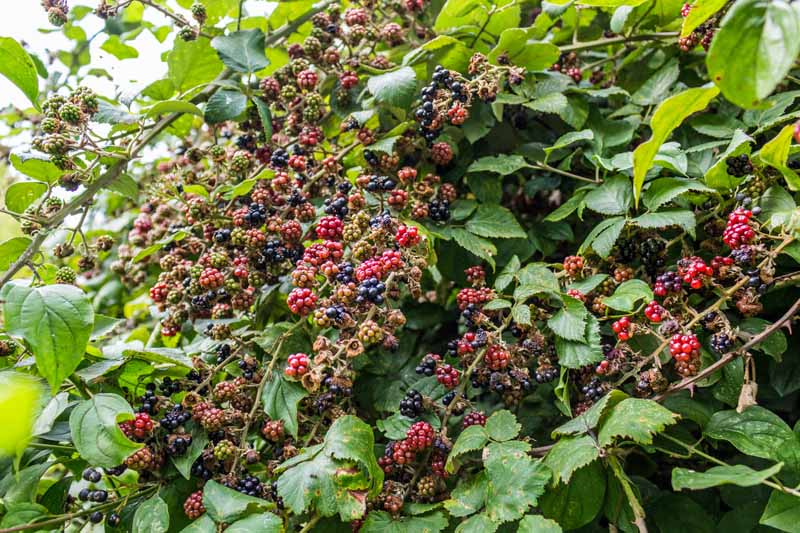
If you have wild patches, you should remove them during the spring and summer. If you are growing berries on purpose, consider planting them on the other side of a hedgerow.
2. Prune
The fruit on trees that are pruned each year will dry more quickly. Also, if you plan to use fungicides, they will penetrate the canopy more effectively.
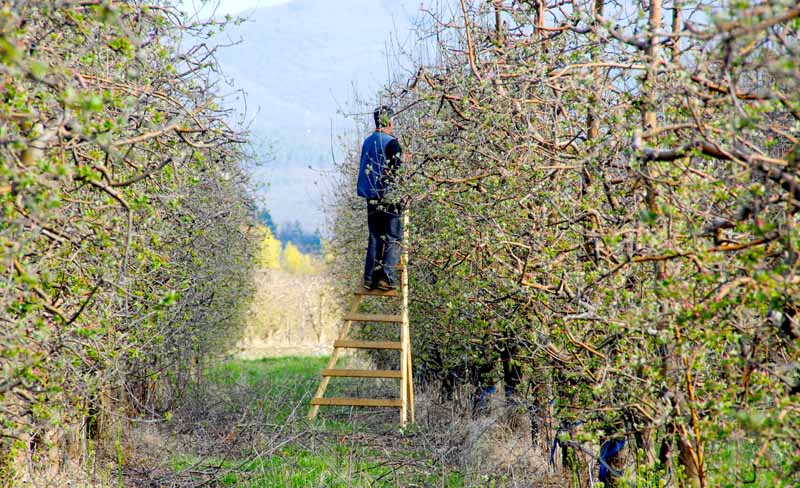
3. Mow
This may seem odd, but low hanging fruit frequently do not dry well if they are growing in tall grass. Getting rid of grass growing close to the base of your trees increases the chances that they will dry, and they will be less susceptible to the fungi as a result.

4. Thin
Apples that are large and growing in clusters can provide a humid environment for the fungi to thrive and also avoid fungicides.
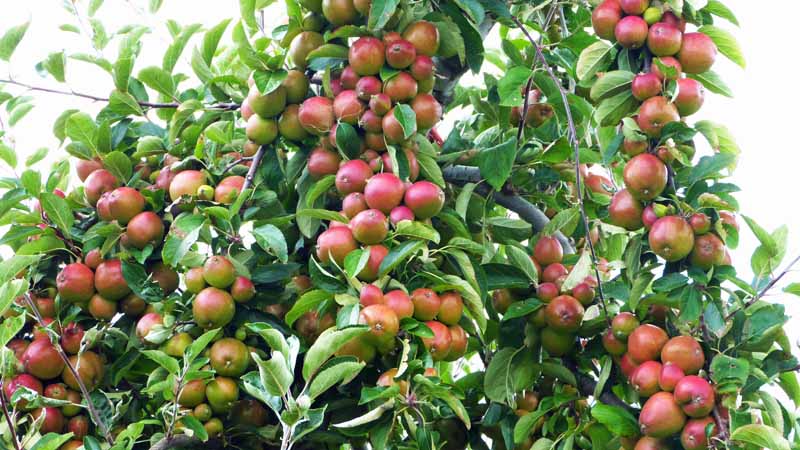
Fungicides You Can Use to Control This Ugly Duo
There are a number of commercial fungicides you can use to control these diseases. If you are worried about secondary effects, some of are “reduced risk fungicides.”
Two strobilurin class fungicides show promise for controlling both sooty blotch and flyspeck. They include kresoxim methyl and trifloxystrobin. They are safer for the environment and human health but are still highly effective.
You should start the applications soon after petal fall and continue in the fall when the weather is cooler. Typically, growers apply the fungicides at 10-14 day intervals.
Now You Know How to Purge These Diseases
The symptoms of sooty blotch and flyspeck are highly alarming. Fortunately, these diseases are superficial, and you may even be able to rub the evidence of them off of your harvest.
Although your fruit are fine to eat, they may be difficult to sell. If your trees are prone to these diseases, you may want to consider red-skinned apples, because the blemishes are less noticeable.
Fortunately, there are a number of cultural control methods you can take to prevent these diseases, and two relatively safe fungicides you can use if need be.
Have your fruit suffered from these hideous apple diseases? Were you able to control them? Tell us about your experience in the comments.
And if you’re suffering from multiple apple tree diseases, some of other guides may be of assistance:

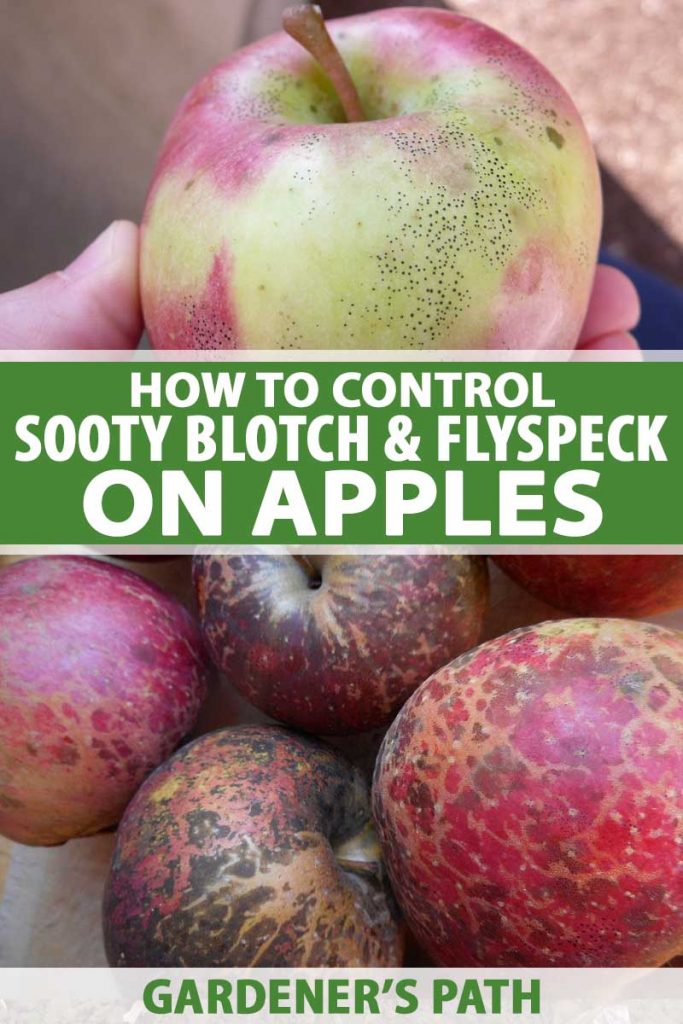
Nice helpful article.
Thank you for this great article. Now I know what happened to my apples. And now I know that I can still eat them. And hopefully I can control the problem in the future. I really enjoyed this well written, informative article.
Thank you for the kind words Darlene! I’m glad the article was helpful. Happy gardening!